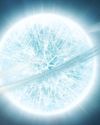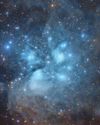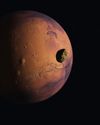Prøve GULL - Gratis
Secrets Of Mars
All About Space
|Issue 113
How a new fleet of missions will help us to solve the red planet’s mysteries

The Red Planet keeps a tight rein on its secrets. Many enduring mysteries about Mars have taken years of research to resolve, only to be replaced by newer, ever more puzzling ones. If exploring Mars directly over the last five decades has taught us one thing, it is sure that even today – after intense scrutiny from above, on the surface and now probing directly below – the Red Planet can still spring surprises.
Mars is a freezing, desiccated desert on which a constant swirl of dust plays havoc with delicate instruments. Worse, mechanical failures and anomalies cause headaches for those who have sent robots in their stead. Even so, most researchers wouldn’t have missed any of it for the world.
“It’s been an amazing journey,” says Dr. Anna Horleston, a seismologist based at Bristol University. “My study faces south, and as it gets dark I have been able to see Mars rise through the window in the early evening. And then I can look down at my screen at wiggly lines, and know they have come from there.”
Those lines represent one of the holy grails of Mars research, the telltale signs of seismic activity. NASA’s InSight (Interior Exploration using Seismic Investigations, Geodesy, and Heat Transport) has been making detailed maps of the Martian interior for the first time. It had long been suspected that the Red Planet had a small core and was more Moon-like in terms of its activity, certainly not as seismically active as Earth. Since the InSight landing in November 2018, more than 450 marsquakes have been identified. Residual heat deep within the interior is still causing small-scale seismic waves.
Denne historien er fra Issue 113-utgaven av All About Space.
Abonner på Magzter GOLD for å få tilgang til tusenvis av kuraterte premiumhistorier og over 9000 magasiner og aviser.
Allerede abonnent? Logg på
FLERE HISTORIER FRA All About Space

All About Space UK
MYSTERIES OF THE UNI WHERE ARE ALL THE SPIRAL GALAXIES?
There are far fewer spiral galaxies than elliptical ones in the Supergalactic Plane, and scientists are keen to discover why
7 mins
Issue 161

All About Space UK
ZOMBIE STARS
+10 OTHER TERRIFYING SPACE OBJECTS
8 mins
Issue 161

All About Space UK
HOW TO BEAT LIGHT POLLUTION
Thought it was impossible to observe the wonders of the night sky from towns and cities? Think again. Follow our tips and tricks on successfully observing through sky glow
2 mins
Issue 161

All About Space UK
15 STUNNING STAR CLUSTERS
These beautiful stellar groupings are spattered across the cosmos
8 mins
Issue 161

All About Space UK
Eileen Collins "It was a difficult mission...we were the first to see Mir"
Having served as both the first female pilot and first female commander of NASA's Space Shuttle, Collins boosted the involvement of women in space exploration to a whole new level
9 mins
Issue 161

All About Space UK
MARS LEAKS FASTER WHEN IT'S CLOSER TO THE SUN
The Red Planet has lost enough water to space to form a global ocean hundreds of kilometres deep
2 mins
Issue 161

All About Space UK
FUTURE TECH KANKOH-MARU
This ambitious reusable spacecraft will be capable of taking 50 people to and from orbit
2 mins
Issue 161

All About Space UK
THE FINAL FRONTIER
Beyond the reach of the Sun is a fascinating region of the cosmos that were only just beginning to explore
8 mins
Issue 161

All About Space UK
A long-lost moon could explain Mars' weird shape and extreme terrain
A long-lost moon could explain why Mars is so different from the other rocky planets in the Solar System. Today Mars has two tiny moons.
2 mins
Issue 161

All About Space UK
A sprinkling of cosmic dust may have helped kick-start life on Earth
Cosmic dust may have helped kick-start life on Earth. New findings challenge a widely held assumption that this wasn't a plausible explanation.
3 mins
Issue 161
Translate
Change font size
